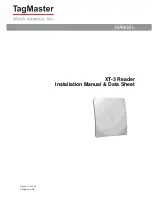
27
they have been specifically instructed on the chair’s use.
• The operators and those being transported must not smoke
in order to prevent damage or risk of fire with respect to
clothes, upholstery or other people.
• Those operating the wheelchair must always keep both
hands on the handlebar to ensure constant control.
• Assembly and adjustment operations must only be carried
out by authorised personnel.
• Never lift up the wheelchair when there is a passenger in it.
• The device cannot be used in areas subject to splashing
water or critical and unfavourable weather conditions
• The operator and the passenger must be careful not to wear
long scarves or loose clothing; these may get caught in the
device and cause dangerous situations.
•
OPERATOR
The device should only be handled on stairs by those who
have been specifically trained:
Operator qualified for handling on stairs
To handle the device on stairs, both going up and down, the
operator must possess a certificate of qualification issued
by the manufacturer or an authorised representative, only
after having received direct theoretical and practical training
and only after demonstrating the ability to safely perform all
the operations described in this manual.
To ascend or descend the stairs, the security key must be
inserted; without this key the device does not accept these
specific commands
• Transfer of the aid
In case the person who handles the device is replaced or
in case of shift rotation, ensure that all those handling the
device have been qualified by the manufacturer or an au-
thorised representative; unqualified people are not allowed
to handle the device.
• Never approach a staircase if the passenger is not in a fully
upright position, or the position of movement (see USE
chapter).
If the passenger is not able to sit in an upright and stable
position, use specific seat belts to secure the passenger to
the backrest.
• Before ascending or descending the staircase, verify the
characteristics of the stairs:
- they must not be covered by rugs or fitted carpeting
- they must not be unstable or unfinished, but compact
- they must not have irregular, broken or collapsed edges
- they must not be wet or slippery.
• Spiral staircases
The device can be handled on closed spiral staircases (with
riser) only if the size and characteristics of the stairs are
compatible with that described in Chapter 7.
• Stair climber operating key
The stair climber can only be operated if the
key is inserted; this protects the device and people from
reckless use by unqualified personnel.
• Warning! Before starting to go down the stairs, tilt the aid
back until both step edge detector wheels are engaged.
These automatically activate the wheel brakes, stopping
the aid on reaching the first step to start the descent.
If this is not done, the aid will not come to a halt and there
will be a high risk of falling down the stairs.
2.2 Pictograms
The following pictograms may be present on the wheelchair or in this manual.
Read the instructions manual
Warning, danger
Operations which must be carried out by qualified per-
sonnel or the service centre
Risk of crushing fingers in the mechanical transmission
Attention! Important information
Electrical hazard
Information
Use of protective gloves
Operations to be carried out by two people
Only wear closed shoes
Compulsory use of the seat belts
Do not wear shoes with heels or slippers
The manufacturer reserves the right to changes to the product and its instructions manual without prior notice or updating of
previous productions.
The manufacturer is not liable for damage resulting from improper use of the wheelchair by untrained or unauthorised personnel,
unauthorised modifications and interventions, the use of unauthorised parts, exceptional events, or total or partial failure to comply
with the instructions in this manual.





































